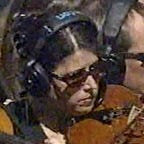Moltmen
post #2
When I think about the Holy Spirit working in the context of trauma, my dad’s story comes to mind. He is stoic, reserved, and painfully introverted. I have mainly only seen him emote while watching TV: howling with laughter watching Seinfeld, sputtering choked-back tears watching sappy Lifetime or Hallmark movies, erupting in alternations of YAHOOEY’s and AWW-COME-ON’s while watching college football. These notable exceptions to his often flat affect are bittersweet for me, entangled as they are in screen-mediated fantasies. To this day, my dad will not talk in any detail about the abuse he endured as a child, but I can witness it in the disconnect with his body and way his frame contracts when emotionality threatens to break through.
In The Body Keeps the Score, van der Kolk writes: “Traumatized people are terrified to feel deeply. They are afraid to experience their emotions, because emotions lead to loss of control. In contrast, theater is about embodying emotions, giving voice to them, becoming rhythmically engaged, taking on and embodying different roles.”¹ I think about theater, and wonder about my dad’s story. Television may provide a vicarious sort of emotional relief for him, but I think the theatrics of the Charismatic church have touched him more deeply, and more personally. There, one can inconspicuously embody the drama of the helpless but trusting child — arms raised, voice crying out. There, one is encouraged to speak a language without semantics, to let the body choose the syllables and musicality of the words streaming forth.
At its very best, the Charismatic tradition has curated accessible environments in which the most fragmented and fragile among us can participate and play, where anyone can learn (remember) how to hoist the sails of the body to catch the wind of the Spirit. I think this pneumatological development of the 20th century has not yet been adequately articulated — perhaps because the theological function always trails behind the spiritual function, sometimes by centuries. For many, the idea of a Pentecostal theologian is almost a contradiction in terms, and reports of the abuses in Charismatic gatherings discourage serious-minded scholarly investigation into what has been learned from all this spiritual experimentation.
Reformed theologian Jürgen Moltmann gives a generous, if remote, assessment of Charismatic phenomena in his book on the Holy Spirit, The Source of Life. Seeking to rescue traditional terminology from the widening secular/sacred divide, he emphasizes the Holy Spirit as the source of life, evidently active wherever there is an increase of life. He writes:
In charismatic experiences, God’s Spirit is felt as vitalizing energy. In the nearness of God we are happy and life begins to vibrate. Things begin to dance when we sense that God surrounds us from every side… And from these experiences we can deduce that the Holy Spirit is the source of life, the origin of the torrent of energy.²
The scope of such a vitalizing energy is vast, and the forms through which it may be received are endless.
The restricted, disjointed, or otherwise disconnected emotionality of severely traumatized people presents a dramatic picture of how alienated human beings can become from the source of life. My dad’s story has also presented me with a dramatic picture: that of a rigid and shamed body moving, dancing, and singing in the language he cannot otherwise speak — the language of the living body.
…
- Bessel van der Kolk, The Body Keeps the Score (New York, NY: Viking, 2014), 335.
- Jürgen Moltmann, The Source of Life (Minneapolis, MN: Fortress Press, 1997), 68–9.
